- The rediscovery in recent years of species long thought to be extinct has sparked calls by scientists for an update of Sri Lanka’s red list of threatened species.
- The current list is based on assessments from 2012, and a scheduled update in 2017 was missed because of procedural delays and resource constraints.
- Conservationists have also called for the red-listing criteria used in Sri Lanka to be consistent with the global guidelines set out by the IUCN, in order to ensure consistency in conservation efforts.
- They also want more species recovery initiatives based on the national red list, to make better use of the data to optimize conservation efforts.
In fact, both Sri Lanka’s national red list and the International Union for Conservation of Nature (IUCN) list the webless shrub frog (Pseudophilautus hypomelas), found nowhere else on Earth, as extinct. Since then, two more amphibians and two plants listed as extinct or possibly extinct in the 2012 national red list have been rediscovered in the wild.
The list was supposed to be updated in 2017 with new assessments. And while these rediscoveries are positive news for conservation on the highly biodiverse Indian Ocean island, the deficiencies of the red list indicate serious glitches in updating the conservation status of species and a failure to reflect the reality on the ground, experts say.
“Sri Lanka has many technically sound researchers who can contribute to this process of carrying out species assessments,” said Wickramasinghe. “With proper coordination, it is not difficult to compile the data. The system does not reflect the urgency that conservationists feel.”
Suranjan Fernando, who was involved in preparing Lanka’s submission for the Convention on Biological Diversity, agreed that an updated red list could help with species recovery efforts.
“We carry out surveys to identify species distribution. It is good to have a repository of information, but the important thing is to introduce species’ recovery plans,” he told Mongabay.

National assessments
The IUCN’s global Red List of Threatened Species is considered the leading repository for the conservation status of species around the world. While the global list is maintained and periodically updated by the IUCN, there are also regional and national red lists that assess conservation status at more localized levels.
Sri Lanka came out with national assessments in 1999, 2007 and 2012, with the subsequent one scheduled for 2017. But procedural delays and resource constraints have hampered the process, causing the deadline to be missed.
“There is a delay in publishing the latest national assessment but reviews will be done as expeditiously as possible,” Padma Abeykoon, head of the Biodiversity Secretariat, the agency responsible for carrying out the national assessments, told Mongabay.
The good news here is that despite the delay, the threatened status of plants has already been finalized, according to Cyril Wijesundera, coordinator of the flora component of the national red list. “The intention is to publish the national red list by October,” he added.
Assessments are plagued by data deficiencies due to the absence of islandwide surveys, especially on less “glamorous” species such as grasses, sedges and some herbs, Wijesundera said.
Devaka Weerakoon, who leads the fauna component of the list, told Mongabay that initial data gathering was underway, though the process was slow. “It is not possible to give a potential date of release of the updated list,” he said. What is easier to conclude is the assessment on freshwater fishes, according to IUCN Sri Lanka’s senior program officer for biodiversity, Sampath Goonetillake.

Domestic criteria
Despite the holistic red-listing criteria and guidelines introduced by the IUCN, countries tend to adopt domestic criteria by making minor adjustments, and Sri Lanka is a case in point.
“IUCN Sri Lanka produced a national list of threatened species using nationally developed criteria in 1999. The first IUCN national red list of threatened species was based on the global criteria, nationally adopted in 2007,” said Channa Bambaradeniya, former head of IUCN Sri Lanka’s biodiversity unit, who was involved in the initial listing process.
“But in some cases we had to deviate from the global criteria to address local conservation realities,” Wijesundera said. “We are a small island with diverse ecosystems scattered within a relatively smaller area, unlike a big continent.”
For a national red list to be adopted by the IUCN, the latter has to review the listing for the application of relevant global criteria in a scientific manner. But this process doesn’t please everyone. Many conservationists argue that it’s best to stick to the global criteria for greater consistency in conservation efforts.
“Having regional level in-country assessments makes sense for endemic species restricted to a specific region. But for species that are globally found, country-specific assessments are of little value from the point of species conservation,” said Rohan Pethiyagoda, a taxonomist and a naturalist who earlier served as the deputy chair of the IUCN’s Species Survival Commission.
Pethiyagoda said he intended to conduct an amphibian assessment using global red list criteria.
“It may not be necessary to carry out assessments every five years. It needs updating only when new data on threats, populations and ranges are available,” he said. “In the case of amphibians, after a period of rapid discovery, there seems to now be a period of stasis. So the time is right for a fresh assessment. The same is true also for freshwater fishes, though 2020 will be a good time for releasing a fresh assessment due to the wealth of unpublished data available.”
For Wickramasinghe, whose team rediscovered the webless shrub frog thought to be extinct, there can’t be any further delays in updating the conservation status for Sri Lanka’s rich and unique biodiversity.
“The need of the hour is to update the national red list and to use the data to prioritize conservation efforts,” he said.
Banner image of an endemic freshwater crab from Sri Lanka. Fifty of the 51 freshwater crabs found here occur nowhere else. The IUCN’s 2015 listing recognizes 24 of them as critically endangered and another 10 as endangered. Image by Nadika Hapuarachchi.






















 මේ ගෙවෙන්නේ 2017 වසරේ අවසන් දින කිහිපයයි. ජුනි මාසයේ පටන් විදුසර සමග ඔබ වෙත ගෙන ආ “ගෙවත්තේ ජෛව විවිධත්වය.” තුළින් අද ඉදිරිපත් කරන්නේ ඔබ අවට පරිසරයේ අසිරිය විදිමින් නව වසර පිළිගැනීමට කරන ඇරයුමකි.
මේ ගෙවෙන්නේ 2017 වසරේ අවසන් දින කිහිපයයි. ජුනි මාසයේ පටන් විදුසර සමග ඔබ වෙත ගෙන ආ “ගෙවත්තේ ජෛව විවිධත්වය.” තුළින් අද ඉදිරිපත් කරන්නේ ඔබ අවට පරිසරයේ අසිරිය විදිමින් නව වසර පිළිගැනීමට කරන ඇරයුමකි. උදා සංවනියේ දි ඔබට කුරුලු ගීත (songs) මෙන් ම හැඩලීම් (calls) ද ඇසිය හැකි වනු ඇත. හැඩලීම හෙවත් නාදය යනු කුරුල්ලන් ගේ සාමාන්ය කෑගැසීමයි. නොකඩවා කරගෙන යන හැඩලීම් එකතුවක් ගීතයක් ලෙස සැලකේ. මෙයට හොඳ ම උදාහරණය කොහා ය. සුවදි සමයේ දී (මූලිකව ම අප්රේල් ආසන්නයේ) තම ගීතය ගයන කොහා, වෙනත් කාලවල දී නාද කරයි. ගීතය ඉතා ම කන්කලු වුවත්, කොහා ගේ හැඩලීම නම් තරමක් කර්කෂ උස් හඩකි. කුරුලු ගිතය මූලිකව ම සන්නිවේදනය සදහා භාවිත වේ.
උදා සංවනියේ දි ඔබට කුරුලු ගීත (songs) මෙන් ම හැඩලීම් (calls) ද ඇසිය හැකි වනු ඇත. හැඩලීම හෙවත් නාදය යනු කුරුල්ලන් ගේ සාමාන්ය කෑගැසීමයි. නොකඩවා කරගෙන යන හැඩලීම් එකතුවක් ගීතයක් ලෙස සැලකේ. මෙයට හොඳ ම උදාහරණය කොහා ය. සුවදි සමයේ දී (මූලිකව ම අප්රේල් ආසන්නයේ) තම ගීතය ගයන කොහා, වෙනත් කාලවල දී නාද කරයි. ගීතය ඉතා ම කන්කලු වුවත්, කොහා ගේ හැඩලීම නම් තරමක් කර්කෂ උස් හඩකි. කුරුලු ගිතය මූලිකව ම සන්නිවේදනය සදහා භාවිත වේ. වසම් වෙන් කරගෙන (Territory) ඒවා ආරක්ෂා කරන පොල්කිච්චා වැනි කුරුල්ලන් උදෑසන ගී ගයන්නේ එම ප්රදේශයේ ඇති උස ම ස්ථානයේ සිට ය. ඉතින් ඇයි කුරුල්ලන් උදෑසන ම ගී ගයන්නේ..? ” මේ බොහෝ දෙනකුට ඇති ප්රශ්නයකි. උදෑසන වාතයේ ගණත්වය ඉහළ නිසා සහ සාමාන්යයෙන් හිමිදිරිය නිශ්ශබ්ද වීමත් නිසා ගයන ගීය වැඩි ඈතකට ඇසීමට ඇති ඉඩ වැඩි හෙයින් කුරුල්ලන් උදෑසන තම ගී ගැයීමට තෝරාගත් බව වඩාත් පිළිගත් මතයයි.
වසම් වෙන් කරගෙන (Territory) ඒවා ආරක්ෂා කරන පොල්කිච්චා වැනි කුරුල්ලන් උදෑසන ගී ගයන්නේ එම ප්රදේශයේ ඇති උස ම ස්ථානයේ සිට ය. ඉතින් ඇයි කුරුල්ලන් උදෑසන ම ගී ගයන්නේ..? ” මේ බොහෝ දෙනකුට ඇති ප්රශ්නයකි. උදෑසන වාතයේ ගණත්වය ඉහළ නිසා සහ සාමාන්යයෙන් හිමිදිරිය නිශ්ශබ්ද වීමත් නිසා ගයන ගීය වැඩි ඈතකට ඇසීමට ඇති ඉඩ වැඩි හෙයින් කුරුල්ලන් උදෑසන තම ගී ගැයීමට තෝරාගත් බව වඩාත් පිළිගත් මතයයි. මා උදා සංවනියට කන් යොමන්නට පටන්ගත්තේ 5.45ට පමණ ය. මුලින් ම ඈතින් ඇසුණේ කොහා ගේ නාදයකි. එයට ප්රතිචාර ලෙස, අපේ ගෙවත්ත අසල ම ගසක සිටි කොහෙකු, මහා හඩින් නද දුන්නේ ය. මෙසේ අප අවට සිටි අඩු තරමේ කොහා 4 දෙනකු වත්, මේ දුර සිට කෙරුණු කථා බහට එකතු වූයේ රාත්රියේ පැලට වී හේන් මුර කළ ගොවියන් ඈත පැල්වල සිටින තම මිතුරන් සමග උස් හඩින් කරන පිළිසදරක් ලෙසිනි.
මා උදා සංවනියට කන් යොමන්නට පටන්ගත්තේ 5.45ට පමණ ය. මුලින් ම ඈතින් ඇසුණේ කොහා ගේ නාදයකි. එයට ප්රතිචාර ලෙස, අපේ ගෙවත්ත අසල ම ගසක සිටි කොහෙකු, මහා හඩින් නද දුන්නේ ය. මෙසේ අප අවට සිටි අඩු තරමේ කොහා 4 දෙනකු වත්, මේ දුර සිට කෙරුණු කථා බහට එකතු වූයේ රාත්රියේ පැලට වී හේන් මුර කළ ගොවියන් ඈත පැල්වල සිටින තම මිතුරන් සමග උස් හඩින් කරන පිළිසදරක් ලෙසිනි. (ඡායාරුපය සචිවනී කොඩිප්පිලි)
(ඡායාරුපය සචිවනී කොඩිප්පිලි)
 The researchers dug randomly selected locations that are habitats for such species. They got lucky and found a snake hidden under the soil layer of a banana plant of a home garden in 2010. The snake was found about 15 centimetres deep and had a highly-modified head, bearing a blade-like rostral scale for burrowing.
The researchers dug randomly selected locations that are habitats for such species. They got lucky and found a snake hidden under the soil layer of a banana plant of a home garden in 2010. The snake was found about 15 centimetres deep and had a highly-modified head, bearing a blade-like rostral scale for burrowing. The new snake belongs to a group called rhinophis. It was named rhinophis roshanpererai to honour the late Roshan Perera, who was an instructor of the reptiles group of the Young Zoologist’s Association of Sri Lanka in recognition of his dedicated services to wildlife conservation.
The new snake belongs to a group called rhinophis. It was named rhinophis roshanpererai to honour the late Roshan Perera, who was an instructor of the reptiles group of the Young Zoologist’s Association of Sri Lanka in recognition of his dedicated services to wildlife conservation. A new species of gecko, too, joined the list of Sri Lankan species last month. This creature lives in the Knuckles range and was previously confused with a similar gecko species. The researchers Sudesh Batuwita and Sampath Udugampala extensively studied the features of these geckos and established the identity of the new species. They named it cnemaspis kandambyi.The gecko has distinct black markings on the nape and a black lateral stripe begins behind the eye and extends laterally beyond the origin of the forearm.The species was named in honour of Dharma Sri Kandamby, the former curator of the vertebrate section of the National Museum of Sri Lanka, for his contributions to the herpetology and for his guidance to a number of researchers.
A new species of gecko, too, joined the list of Sri Lankan species last month. This creature lives in the Knuckles range and was previously confused with a similar gecko species. The researchers Sudesh Batuwita and Sampath Udugampala extensively studied the features of these geckos and established the identity of the new species. They named it cnemaspis kandambyi.The gecko has distinct black markings on the nape and a black lateral stripe begins behind the eye and extends laterally beyond the origin of the forearm.The species was named in honour of Dharma Sri Kandamby, the former curator of the vertebrate section of the National Museum of Sri Lanka, for his contributions to the herpetology and for his guidance to a number of researchers.




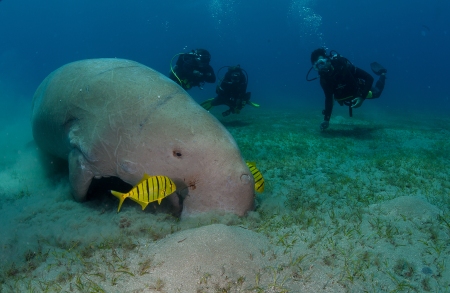


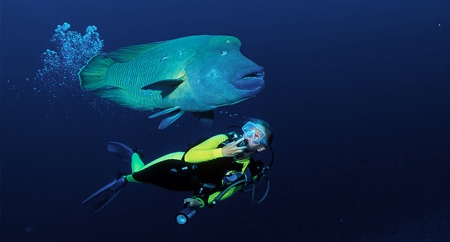



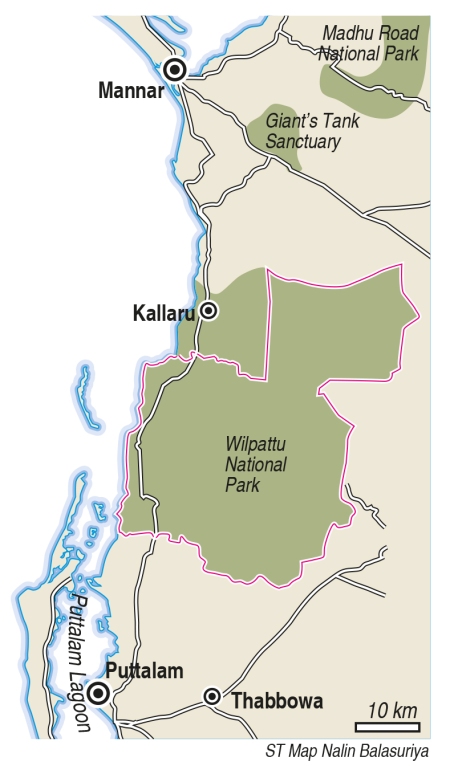
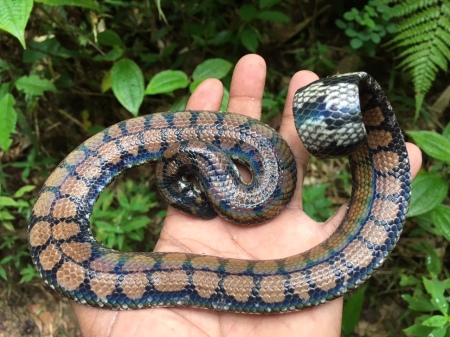





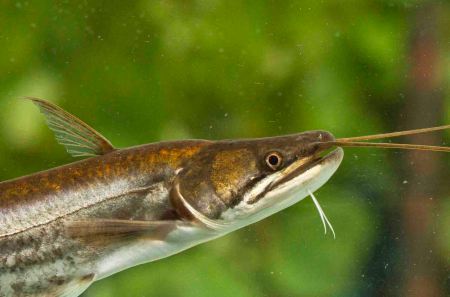



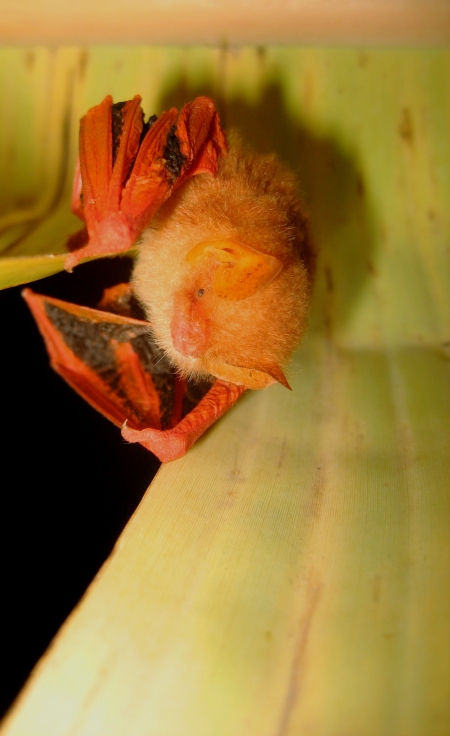




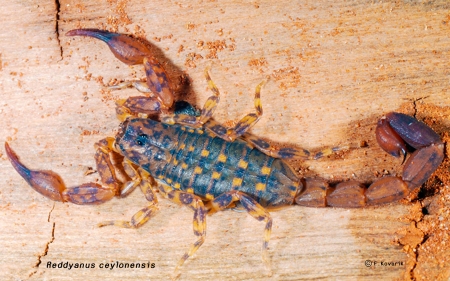
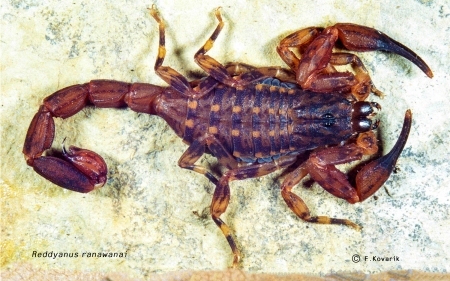
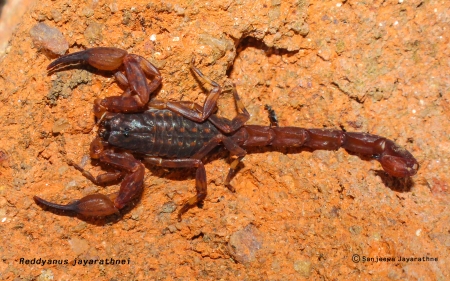
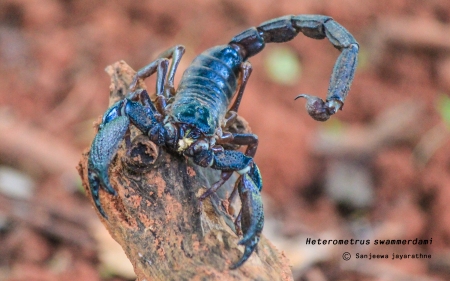
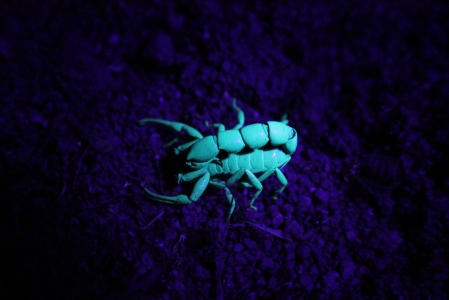




 Rajakaruna’s day gecko in Sinhala, Tamil and in English, respectively.
Rajakaruna’s day gecko in Sinhala, Tamil and in English, respectively.

